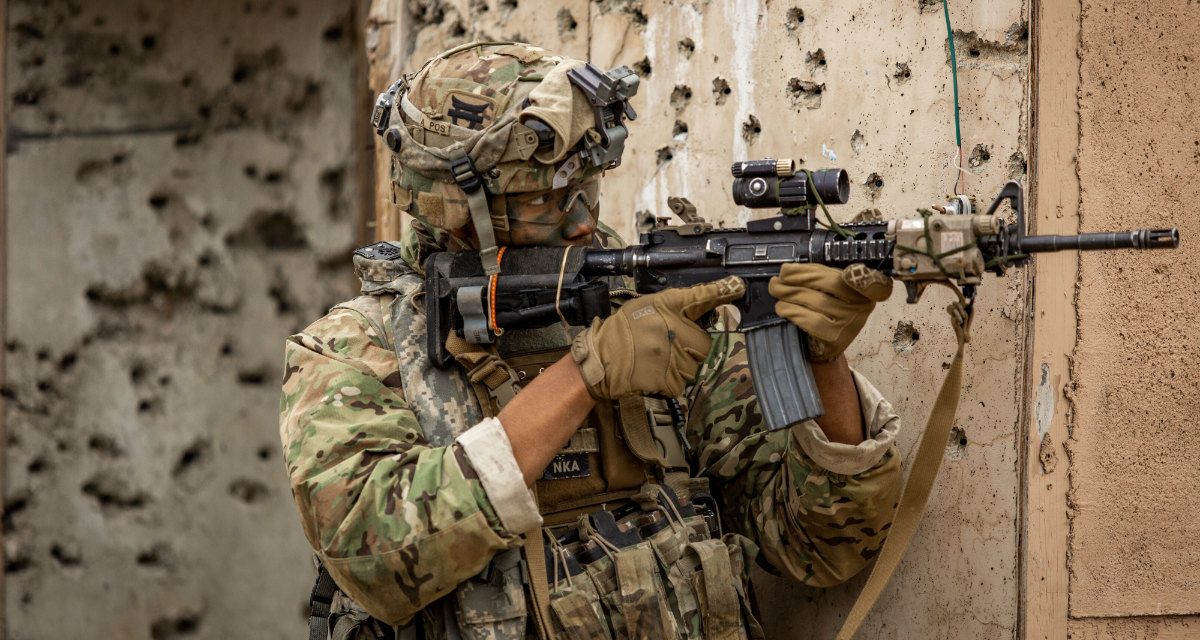Last month former Staff Sgt. David G. Bellavia became the Iraq War’s first living Medal of Honor recipient.
The details of the extraordinarily brave event read like every soldier’s nightmare. A “house of hell” filled with enemy insurgents prepared to die in almost every room. Bellavia and his fellow soldiers were outgunned, overmatched—disadvantaged in every respect. That was the sad state of American military capabilities in 2004. But the reality is that if today’s military was placed in a similar battle, little would be different.
Bellavia’s “house of hell” was just one of the hundreds of similar houses that soldiers and Marines faced during the Second Battle of Fallujah in November of 2004. They actually cleared over 30,000 houses in that city. Each time they were unaware if they were entering a death trap or an empty structure. Enemy forces had cheap but more powerful rifles and rocket-propelled grenades. They had fortified bunkers in concrete houses that most American weapons could not penetrate and the enemy knew it would take suicidal room-clearing assaults and ultimately the destruction of the city to eject them.
Read the full piece at the Military Times.
Image credit: Capt. Justin Wright, US Army



"Little would be different"
House-to-house fighting is complex and extremely dangerous, agreed.
However, from 2004 to 2019, I disagree that little would be different because both the USMC and US Army have increased their destructive infantry firepower and now wear better body armor. There are already infantry weapons, Exoskeletons, robots, body armor, small guided munitions, drones, non-lethals, logistics, and new handheld weapons that do make a bit of difference from 2004.
I think the issue is getting these new systems deployed into the hands of the soldiers and Marines in proper quantities. It is more and now better than the soldier holding the M4 because even the Marines went to the HK-416. Both Land Forces have learned and solved some problems based on MOUT training and battles.
That addresses one part of a multiparty problem, lethality. Something the US Military does well, but the more pressing need here is doctrine which you could argue is a cultural challenge, and better detection, which remains a technical problem.